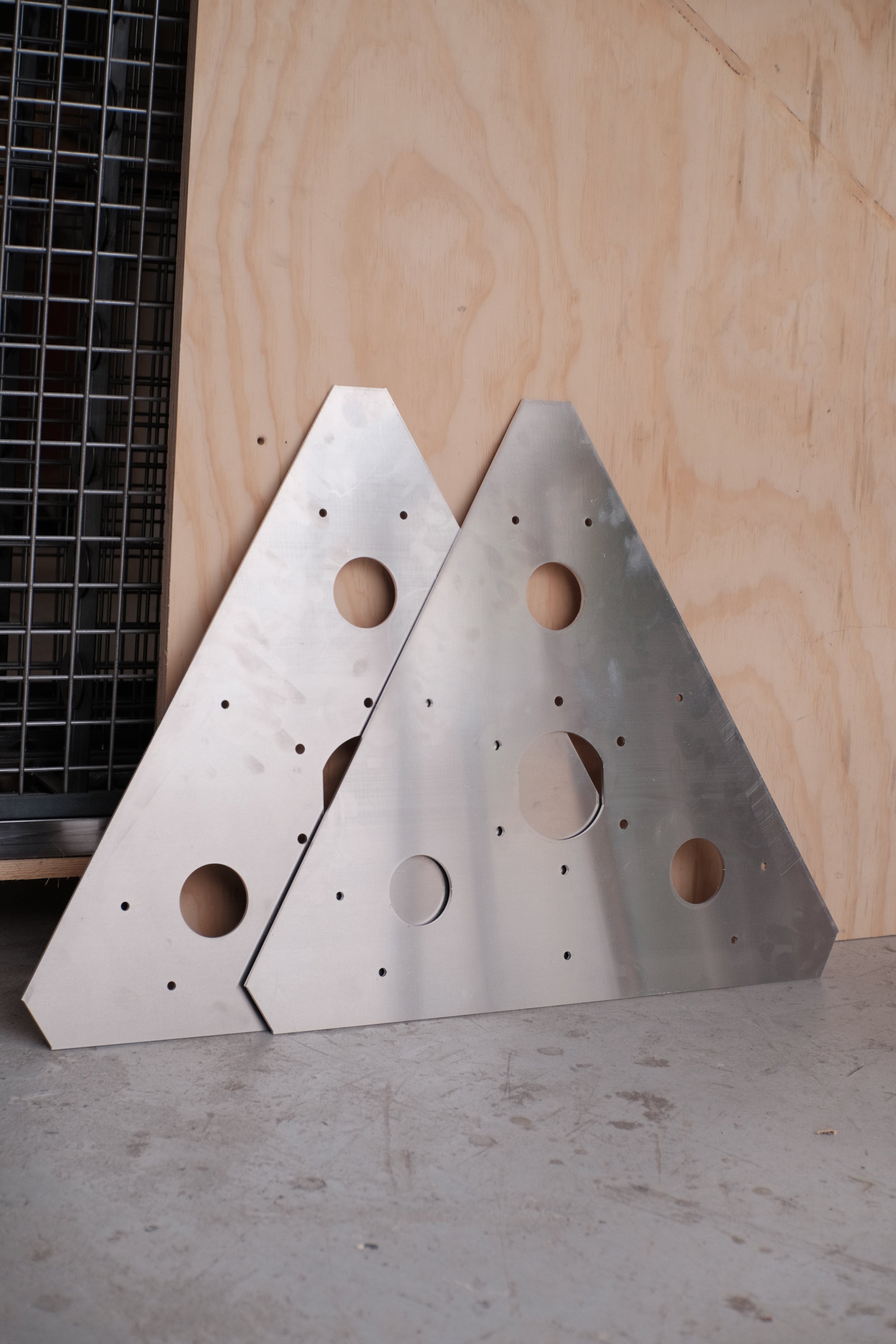
How constraints fuel creativity
by Joris Wintgens
·
When we started OFFSITE, we knew we weren’t taking the easy route. Working with reclaimed materials means starting every project with limitations, what’s available, what condition it’s in, and how much of it there is. But instead of seeing constraints as obstacles, we’ve learned to treat them as the spark that fuels our creativity.
Working with reclaimed materials means we can’t just order what we need. Instead, we have to design around what’s already out there. Sometimes we find sheets of stainless steel with scratches and dents. Other times it’s odd-shaped aluminum offcuts or leftover beams that don’t match in size. Rather than fight these imperfections, we work with them. Take our SHELVE__03, for example. The wooden planks for the shelves were uneven. We had to cut pieces to lengths as some parts weren’t usable. This decided how wide the cabinet could be. Instead of forcing the material to fit a pre-made plan, we let it guide the design.
Every project is a puzzle in a way. How do we create something functional and beautiful using materials that weren’t necessarily intended for furniture? Sometimes we need to weld pieces together to make larger surfaces, or we have to develop new or improvised techniques to clean and polish worn materials without erasing their character. One of the biggest lessons we’ve learned is that creativity thrives under pressure. Limits force us to try ideas we might never have considered if everything had been readily available. In many ways, constraints keep us from playing it safe.
The limits we face aren’t just about material availability, they’re also decisions we make on purpose. For example, we’ve chosen to only use waste materials and to produce locally. These decisions simplify some aspects of production while making others more complicated. But they also keep us focused on our core values. Choosing to work this way means we’re always looking for new approaches. Whether it’s rethinking how to join irregular parts or designing furniture that can be disassembled and reused again, these constraints push us to be more inventive.
A limited palette of materials forces us to be selective and intentional. It means we spend more time thinking about form and function. And it pushes us to make each design count. Ultimately, constraints keep us honest. They remind us why we started OFFSITE in the first place, to prove that good design doesn’t need endless resources.